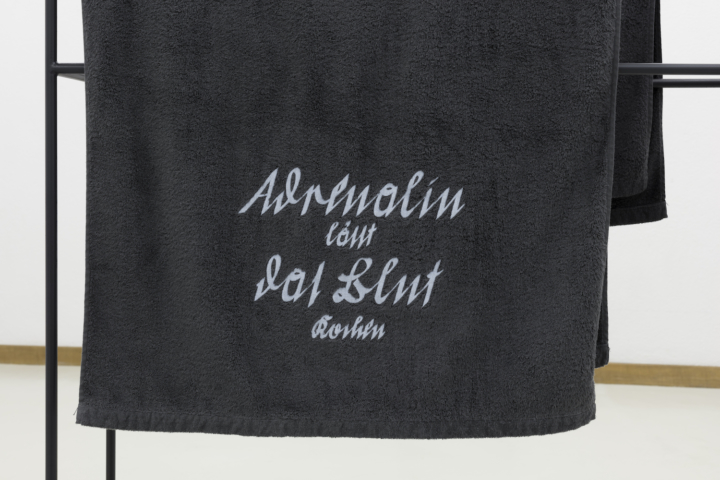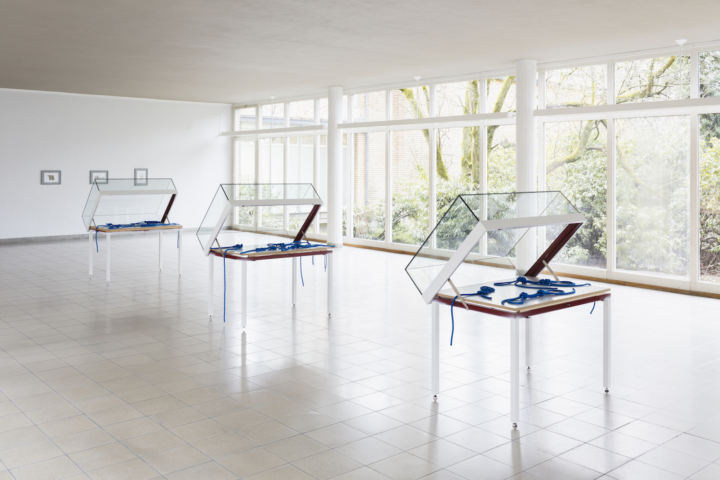Marta Riniker-Radich’s survey inside the modernist setting of Kunsthaus Glarus is flooded by light filtered through skylights and garden windows. Known for her small-scale colored-pencil renderings, the artist responds, using the odd formal qualities of her graphic works to mirror the gallery architecture. A large white cube in the center of one drawing houses a video rendering of a rotating ring, Strength resides in the hearts of the weak (2018). The text around its digital jewel spells out the title, but it visually references the rings of Texas A&M University, the public American university with a deep connection to oil and its finances. It’s like a symbol of a loaded symbol.
These signifiers pop up elsewhere: a group of three ethereal swords, A highly sophisticated security blanket (2015); a room hung with a variety of locks, The enemy within (2017), the shading and shadows drawn so obsessively they seem to warp with toxicity. Anyone who’s put together an IKEA product knows that technical drawings tend toward the surreal on their own, but Riniker-Radich somehow squeezes out more with her mechanical talent.
The basis and success of Riniker-Radich’s work has been her drawings of bizarrely bourgeois rooms. Glenn McCarthy Goes to Sea (2010) is kind of like Captain Nemo for the disco era (green shag, built-in aquariums). The title again references a classic oil tycoon ego, and the giant set of teeth depicted inside a glass vitrine speaks to her interest in playing with scale. A basement room is empty save for a set of speakers and pink carpeting, the color and kind one associates with mid-range banquet halls. Visually it’s like walking into one of the drawings upstairs, minimal yet excessive. A spoken text echoes around, A life by default (2018), charting a quick synopsis of a character and his empire. Riniker-Radich lulls us into the tempting and wild ways of the rich, but never lets us know if we’re to critique or celebrate, or if any of it is real at all. It’s not an issue. The work is sensuous, and in the backs of our minds we all know that public institutions are the party rooms of the wealthy to begin with.






